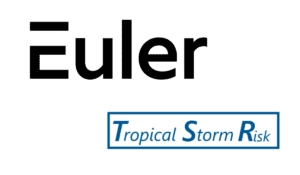RMS puts hurricane Otis industry loss below US $4.5bn

Risk modelling specialist Moody’s RMS has estimated that the insurance and reinsurance market loss from recent major hurricane Otis and its devastating impacts on Mexico’s Pacific coast in the Acapulco area will be in the range of US $2.5 billion to US $4.5 billion.
It’s a lower range than rival Verisk had estimated at the start of the month, when that company gave an insurance industry loss estimate for hurricane Otis of somewhere between US $3 billion and US $6 billion.
RMS said that its estimate represents the insured losses associated primarily with wind damage from hurricane Otis, reflecting property damage and business interruption losses to residential, commercial, industrial, and automobile lines of insurance business.
It also considers the potential for post-event loss amplification (PLA), inflationary trends, and non-modeled sources of loss, including infrastructure damage.
However, it does not include losses to any sovereign protection programs, in traditional insurance or reinsurance form, or as insurance-linked securities (ILS) such as the Fonden catastrophe bond that is likely facing being triggered by the hurricane.
Jeff Waters, Staff Product Manager, North Atlantic Hurricane Models, Moody’s RMS, commented, “Major Hurricane Otis was an unprecedented event across multiple fronts. As a Category 5 storm with 165 mph sustained winds, it was the strongest landfalling hurricane on record in both the Acapulco region and Mexico as a whole, aided by a period of record rapid intensification in the 24 hours prior to landfall. Observational windspeed data – while limited – suggests a broad swath of exposure and population was affected by major hurricane-level wind gusts. Prior to Otis, this region of Mexico had never experienced a Category 5 hurricane landfall, underscoring the importance of using catastrophe models to fill in gaps associated with the historical record, understand the events that haven’t happened yet but could, and the potential impacts on present-day exposure at-risk.”
RMS said that the insured losses from hurricane Otis will be driven by wind damage, with a minor contribution from storm surge and precipitation-induced flooding as well.
Insured wind losses are expected to largely fall to the commercial lines side of the industry, including commercial multi-family dwellings, hotels, resorts, and high-rise buildings that experienced significant damage from the hurricane.
Julie Serakos, Senior Vice President, Moody’s RMS, added, “In determining the overall damage estimates from this event, underinsurance is a common theme. Much of the damaged exposure is unlikely to be insured to the full value of the structure or insured at lower limits, especially in inland regions. We expect most of the insured losses to be driven by damage to coastal commercial and commercial residential exposure. Nevertheless, we expect Otis to be one of the costliest hurricanes in Mexico history from both an economic and insured loss perspective.”
Rajkiran Vojjala, Vice President, Model Development, Moody’s RMS, also said, “The strongest winds from the event caused damage to a large stretch of modern, high-rise exposure along Acapulco Bay, including apartment complexes, hotels, and resorts. Aerial imagery and reconnaissance to date show that Otis caused some of the most incredible wind damage to modern-day high-rise structures we have ever seen, as observed winds well-exceeded prevalent design wind speeds for the region. While several tall buildings survived record gusts, thanks to well-designed structural systems in place for earthquake safety, their lightweight cladding and exterior that improves seismic performance, bore the brunt of high winds, and was destroyed. Recovery and reconstruction efforts could take years. During this time, we expect a high number of total constructive losses given the damage severity and complexity of repairs.”





